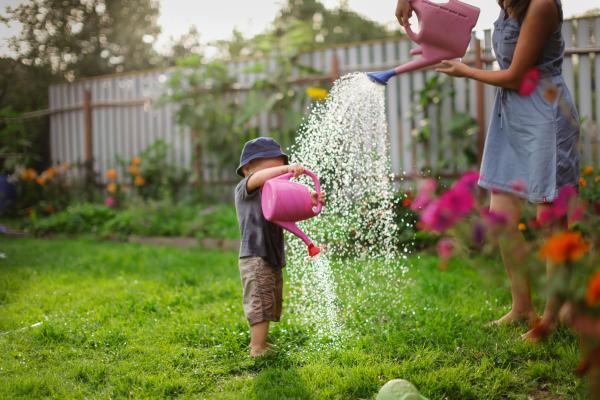Kids spend a lot of time outdoors in the summer months.
With that in mind, Australian garden tool provider STIHL has put together a list of tips to create a kid-friendly garden.
1. CREATE A KID’S PLOT: Teach your kids about nature by creating a garden plot where they can nourish and grow their own edible species, such as herbs and bok choy.
2. BUILD A BUG HOTEL: Bugs and insects are key to a successful garden. The right type of insects help ward off detrimental insects, and are also responsible for the pollination of ornamental flowers and food crops.
3. SOFTEN EDGES: Identify a tripping hazard or a sharp edge before it’s too late. Look out for hard objects that are at eye level with your little one, such as garden furniture or retaining walls. If you have wooden objects in your garden, such as garden bed edging or a sandpit, soften the edges using your chainsaw so that your kids don’t get caught on.
4. TOOLS UP: Keep all of your power tools such as mowers and trimmers, and hand tools like secateurs and hammers, up high and out of reach at all times. If you have a battery powered tool, be sure to remove the safety key in the event that some little hands get a hold of it.
5. THROW SOME SHADE: Shade is something to be particularly mindful of when adding play equipment to your garden, such as a cubby house, a sandpit, or a mud kitchen. A big shady tree or a light shade sail will allow them to play for hours on end without the risk of sun damage.
6. BUILD A MUD KITCHEN: A mud kitchen will stop kids’ curious minds from wondering to other areas of the garden, and
potentially getting into mischief. A mud kitchen that is well stocked with plenty of cups, bowls and utensils will allow your child to use their imagination, get creative, and create a big old mess outdoors rather than inside.
7. SLIPPERY HAZARDS: A build-up of moss and dirt on pavers and driveways can become slippery when
wet. Giving these areas a good scrub every couple of months with a high pressure cleaner will help prevent nasty falls. Using a surface cleaner attachment will help you remove this coverage completely.
8. LOCATION IS EVERYTHING: Carefully consider where you place play equipment. You should be able to see all play areas from where you might be whilst your kids are playing, for example, from the kitchen window. A sandpit is a great way to keep the
kids entertained and in one location. Also avoid placing play equipment in areas that are drenched with full sun when your kids are likely to be playing there, such as in the afternoons.








